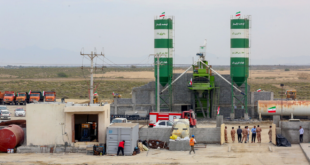
Outgoing IDF Intelligence Analysis chief Brig.-Gen. Dror Shalom has published an article about how he and others have been working up a revolution in intelligence to confront a constantly radically changing world.
In his article in the upcoming journal of the Center for Researching Intelligence Methodology of the Israeli Intelligence and Heritage Commemoration Center , an advanced copy of which was obtained by The Jerusalem Post, Shalom writes that the current era poses unique challenges for intelligence officials.
In this rare peek behind the intelligence curtain, he explains that there are now “more questions to answer, the questions are more complex, they evolve at a faster pace… There is more information… And the new technologies provide more tools to answer the questions and evaluate the data.”
While the article avoids highlighting concrete examples so as not to give away specific operational intelligence techniques, it is well known that in recent years the IDF has had to cope with a mix of Iran, Hezbollah, Shi’ite terrorist groups, the Assad regime and Russia all mixing with each other at the same time in shifting areas of Syria.
In any given year or period of months over the last decade, the entire face of Syria or Lebanon may have looked radically different, and interests, alliances and threats may suddenly shift.
All of this is happening when out of nowhere Hamas, Hezbollah or some other group may achieve some new drone warfare or other capability, and as the IDF itself is utilizing new powerful cyber and other surveillance tools to track threats.
It is obvious that having more complex questions, which are a constant moving target, would make the job of an intelligence analyst like Shalom infinitely harder.
What is less obvious, but which Shalom incisively highlights, is that collecting far greater volumes of information and having more technological tools to parse the data make the job harder. This is true because there are no additional resources and personnel to keep up with the new volumes of data and techniques for analyzing them.
The outgoing IDF intelligence analysis chief then provides an example on how the intelligence community is trying to strike an extremely sensitive balance between becoming more interdisciplinary and more nimble in adjusting to new developments, while maintaining crucial levels of specialization and expertise.
As Shalom describes it, during the era of prior IDF intelligence chief Maj.-Gen. Herzi Halevi, from 2014 to 2018, radical, sudden and complex intelligence problems that arose would be dealt with by forming ad hoc task forces.
If, traditionally, IDF intelligence was split up into sections with specific country-related expertise, such as focusing on only one country among Syria, Lebanon, Iran and others, these ad hoc groups helped deal with cross-border issues, which might have suddenly arisen out of nowhere.
Generally, Shalom’s reference point is forcing intelligence collection and intelligence analysis officials to work more hand in hand throughout their work.
Interestingly, the article implies that moving forward, with breaking down specialty units’ organizational walls and integrating officials from different departments who previously interacted very little, is happening first with signals (SIGINT) and visual intelligence (VISINT) units, and only at a later stage with human intelligence.
But Shalom says that in the current era of IDF intelligence chief Maj.-Gen. Tamir Heyman, officials realized that ad hoc solutions were highly inadequate.
According to the article, there may be some good qualities to bottom-up and temporary solutions, but without a sea change in thinking from the highest levels, the young officials who make up the bedrock of IDF intelligence are often left confused about their duties and trajectory.
Major processes are already under way to integrate all of the specialized SIGINT units, but Shalom says that he and other top officials are still deeply involved to make sure that the changes do not lead to turf warfare between different section leaders.
A major way that Shalom says they can strike the right balance is by splitting up the intelligence gathering and analysis process into two stages.
At a more initial stage, it is crucial for those collecting and analyzing intelligence to be integrated.
Without their integrated expertise and skill sets, they will simply not be capable of understanding all of the sides of whichever enemy force or combination of enemy forces they are following.
Also, this integration is necessary to achieve the best use of new technological techniques for sifting data.
For those involved at this level, there will be some loss of specialization and depth of knowledge about certain adversaries, but that depth can be filled in at the next stage.
If the initial stage will focus more on an interdisciplinary approach to best capture all key data points, the later stage, involving more senior officials, who must exercise judgment and come up with concrete policy recommendations, will still emphasize depth and longer experience following certain groups and issues.
Shalom concludes the article by saying that the current changes are a history-making event and will “better balance between preservation [of traditional specialized expertise] in order to avoid defaulting on the great responsibility on it [IDF intelligence] and between innovative disruption, in order to match up properly to the challenges of a changing reality.”
Shalom recently highlighted, in an interview with Yediot Aharonot, his unit’s role in providing Prime Minister Benjamin Netanyahu with crucial intelligence to embarrass and undermine Hezbollah with the general Lebanese public.
 Eurasia Press & News
Eurasia Press & News



